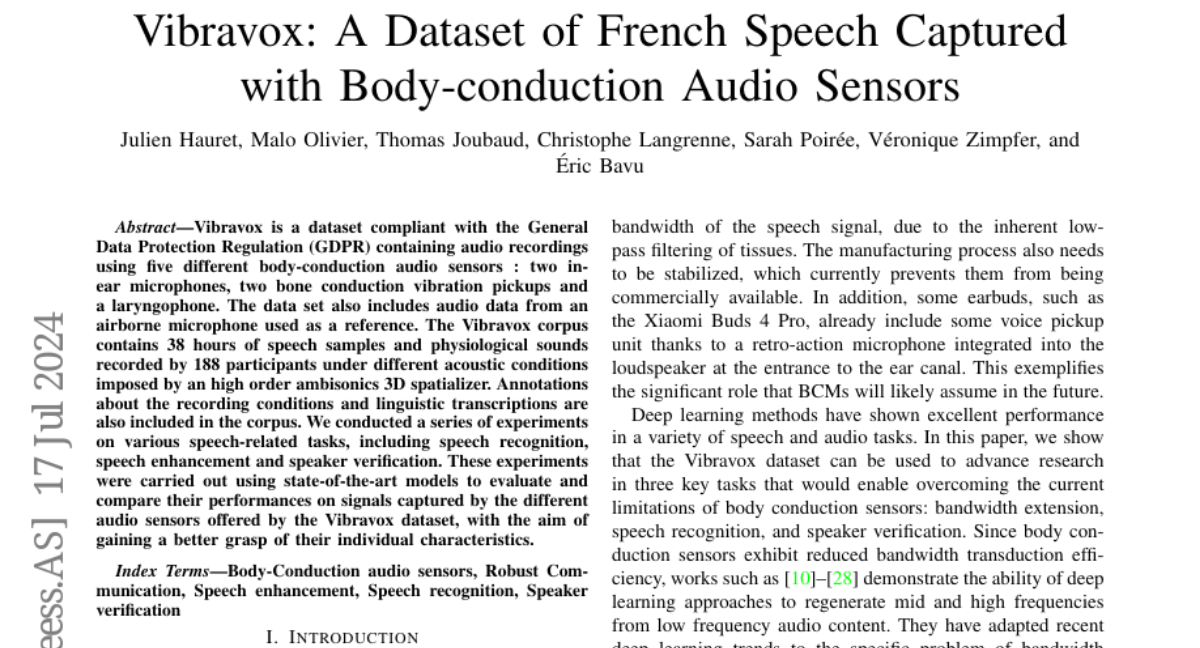Vibravox: A Dataset of French Speech Captured with Body-conduction Audio Sensors
Julien Hauret, Malo Olivier, Thomas Joubaud, Christophe Langrenne, Sarah Poirée, Véronique Zimpfer, Éric Bavu
2024-07-17

Summary
This paper introduces Vibravox, a dataset of French speech recordings captured using various body-conduction audio sensors, aimed at improving speech-related machine learning tasks.
What's the problem?
Research on speech recognition and processing often lacks sufficient data, especially for languages like French. This is particularly true for data collected using innovative technologies like body-conduction audio sensors, which capture sound in unique ways. Without enough diverse and high-quality data, it's challenging to develop effective machine learning models that can accurately understand and process speech.
What's the solution?
To address this issue, the authors created the Vibravox dataset, which includes over 38 hours of audio recordings from 188 participants using five different types of body-conduction audio sensors. The dataset features well-aligned captions and includes annotations about the recording conditions. The researchers also conducted experiments on various speech-related tasks, such as speech recognition and enhancement, using state-of-the-art models to evaluate how well they perform with the different types of audio data provided by Vibravox.
Why it matters?
This research is important because it provides a large and diverse dataset that can significantly advance the field of speech processing for French language applications. By enabling better training of machine learning models, Vibravox can improve technologies like voice recognition systems, making them more accurate and effective for users in real-world scenarios.
Abstract
Vibravox is a dataset compliant with the General Data Protection Regulation (GDPR) containing audio recordings using five different body-conduction audio sensors : two in-ear microphones, two bone conduction vibration pickups and a laryngophone. The data set also includes audio data from an airborne microphone used as a reference. The Vibravox corpus contains 38 hours of speech samples and physiological sounds recorded by 188 participants under different acoustic conditions imposed by an high order ambisonics 3D spatializer. Annotations about the recording conditions and linguistic transcriptions are also included in the corpus. We conducted a series of experiments on various speech-related tasks, including speech recognition, speech enhancement and speaker verification. These experiments were carried out using state-of-the-art models to evaluate and compare their performances on signals captured by the different audio sensors offered by the Vibravox dataset, with the aim of gaining a better grasp of their individual characteristics.